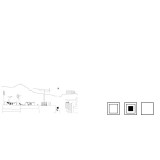Supervisor:
2015
Athens, the habitation model of which was followed by other Greek cities in the post-war period, developed rapidly and inconsistently. This condition had an obvious impact on the figure of the city itself which has its roots on the “invention” of what is called “polykatoikia”, a greek term refers to apartment buildings. The program of social housing which was an appropriate tool for housing [for example other european cities] was never implemented in Greece. Polykatoikia consists a bricolage of culture, society and culture. What makes its analysis an interesting field of research is the particular nature that transcends the boundaries of the building and includes within inanimate and animate content. It is not only a type of building but an urban phenomenon as well. In order to be understood as a physical, cultural and ideological construction the study attempts to examine its characteristics through alteration of the scale used starting from the building type as a whole (large scale) detecting the design principles and their changes over time using floor plans of each period as a case study. The detailed observation of the interior of the apartments based on experimental perceptions and on film scenes dating from the heyday of reconstruction aims to add different views based on social factors (smaller scale). The methodology in the end focuses on the the boundaries of the building by placing the field of study in the block, the block being studied "from outside". It explores the relationship of the building with the public area of the city, the boundaries between private and public life (large scale). Through the study, the recording and the analysis of these parameters is attempted to understand the paradoxical character arising from institutional and social mechanisms. The experiential connection with the subject of the study raises concerns for items considered susceptible and familiar but receive also another interpretation.
